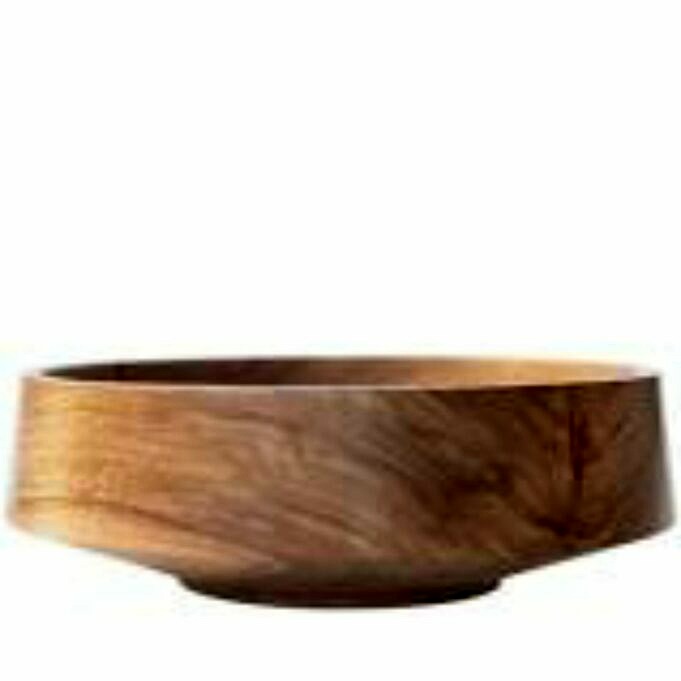After teaching a class in woodworking at PetersValley, I returned to my home. During the five days that I spent there, I had some time towork on a few new projects. One of them was a walnut bowl. I am often inspired by an old block of wood, a piece of furniture that has been thrown away or an item of hardware. This triggers the idea to transform or invent something new. This was the case. It all began when I noticed an odd-shaped piece of freshly cut walnut in the wood shops scrap bin.
The found walnut scrap
The piece had long triangular proportions with a distinctlip-like apex. The lip reminded me of a branch that was cut or broken off from a tree trunk. It was then gradually closed off, but not completely. That area lookedorganic and intriguing, perhaps even sensual, so I decided totransform the scrap into something new, hinging on the lip as aninspiration. I held the piece in my hand and contemplated what to do.Very soon it came to me that I want to turn it into a vessel, to carveout much of the walnut and let the lip area become the focal point forthe new piece.
I began by marking with white chalk the line that determines thevessels waterline location (where the hull of a ship meets thesurface of the water, and in this case the surface of the table. )Following this, I cut the waterline with a band saw then joinedit, as well as the long right-angle edge of the block, at an angle of80, to give it a more graceful ascent.
Drawing in pencil of the natural edge and waterline of the bowl.
Outlining the waterline with a white chalk
The waterline of the bowls can be shaved
Joining the waterline of the bowls
Joining the bowls at 80 degrees
After this, I outlined the area I decided to excavate. Then I pickedup a wide #8 sweep Swiss-Made carving gouge and began gouging out thewalnut.
I began at the center of the outlined area, and slowly increased both the excavation’s surface and depth. It was easy to carve along the grain, and my gouge was sharp enough that I could easily gouge across it from both the left and right.
I clamped the block with two clamps and wood cauls. I began at the center of the outline and increased the excavation’s depth and surface gradually.
With a sharp gouge it is easy to carve across the grain
My trench was getting steeper. I needed a spoon-gouge to get to the bottom. However, a #7 wentuge worked well, but a #8 gouge is more effective because the corners catch less dirt on the slopes. To gain access to all areas of the excavation, I had to reposition the clamps as well as the cauls a few times. This was not a problem because the bowl is long and its bottom (thewaterline) is flat.
The walnut bowl finished and the gouges I used to make it.
I was able to remove most of the wood I had intended. Now I plan to allow the bowl to adjust to our home and to finish its drying period. This will most likely impact its shape. In a few months, Ill check its moisture content, then probably will need to re-plane the waterline for flatness, followed by some final gouge work to itshull. Afterward, I will apply some flax oil as a final step, thenput a check mark on this project.
If you have unusual scraps pieces, consider turning them into artisticbowls, spoons or cutting boards. This project is a great opportunity to improve your carving skills, and transform an unfinished piece of wood into something artistic.
The bowl is nearly finished. It was filled with all of the walnut carving chips I had gouged.



